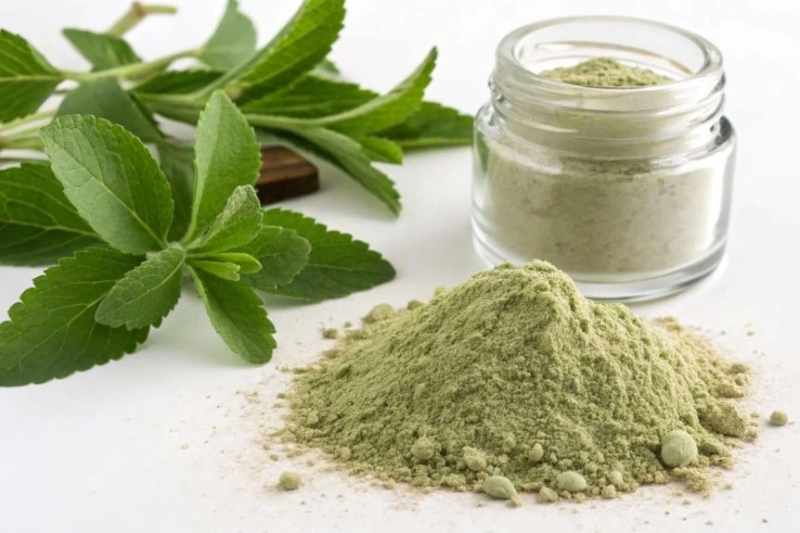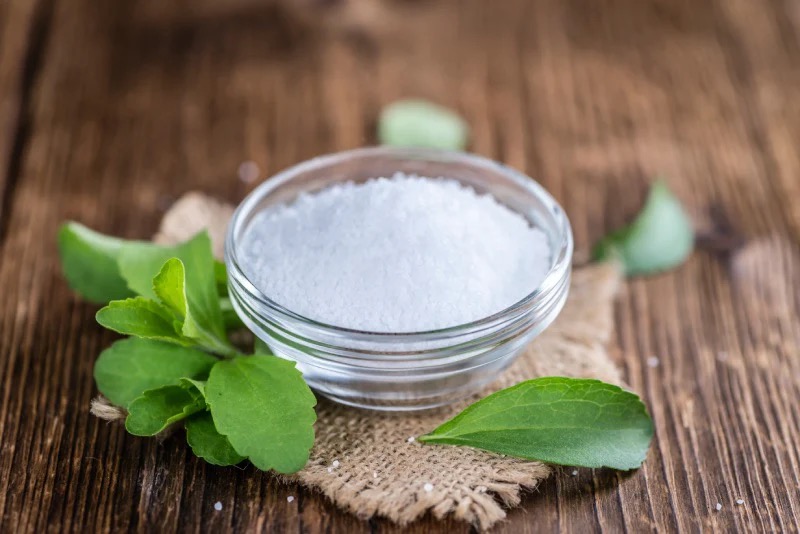







Content Menu
● Digestive physiology and potential links to diarrhea
● Stevia in blends: a common source of GI symptoms
● Evidence from recent studies
● Practical guidance for product developers and manufacturers
● Case studies and market perspectives
● FAQ
>> 1. How can Stevia cause diarrhea?
>> 2. Are there safety concerns for children or pregnant women with Stevia?
>> 3. What constitutes a tolerable daily intake of Stevia glycosides?
>> 4. Do sugar alcohols in Stevia products cause diarrhea?
>> 5. How should Stevia-containing products be labeled to minimize GI concerns?
Stevia has emerged as a leading natural sweetener in the global food, beverage, and healthcare sectors. As consumer demand for clean-label ingredients grows, Stevia-based sweeteners, blends, and functional formulations play a pivotal role in reducing added sugars while maintaining palatability. For manufacturers partnering with overseas brands, our factory specializes in natural sweeteners, functional polyols, and dietary fibers, and offers blended sweetener development, tablet production, and comprehensive OEM/ODM services. This article explores whether Stevia can cause diarrhea, clarifies where digestive discomfort may originate, and provides practical guidance for product developers and regulators aiming to ensure GI tolerability and regulatory compliance.

Stevia refers to sweet compounds derived from the Stevia rebaudiana plant, most notably steviol glycosides such as rebaudioside A and stevioside. These glycosides deliver intense sweetness with minimal or no caloric contribution. In many markets, Stevia is approved as a sweetener, with regulatory status varying by compound and country. Product formats range from pure extract powders and liquids to blends with sugar alcohols or other natural sweeteners. For formulation engineers, choosing the right Stevia fraction and purity level is key to taste profiles, aftertaste mitigation, and mouthfeel in final products.
- Stevia glycosides versus sugar alcohols: While steviol glycosides themselves are largely noncaloric and do not inherently induce osmotic diarrhea at typical intake levels, many commercial Stevia products are blended with sugar alcohols (polyols) such as xylitol, sorbitol, or maltitol to adjust sweetness perception or viscosity. These polyols can cause osmotic diarrhea in some individuals, especially at higher dietary loads.
- Gut microbiome metabolism: The digestion and metabolism of Stevia involve gut microbiota, which can convert steviol glycosides to steviol, a metabolite that can be absorbed and excreted. Individual microbiome compositions influence the extent and rate of metabolism, which may affect tolerability for some people. However, current evidence suggests that Stevia's impact on gut microbial composition is variable and context-dependent rather than universally causative of diarrhea.
- Dose-dependent effects: Like many non-nutritive sweeteners, tolerability often depends on dose. Moderate use within labeled serving sizes is less likely to provoke GI symptoms, whereas excessive or chronic high-dose exposure—especially in blends with polyols—may increase the risk of GI upset, including loose stools.
- Population variability: Sensitivity can differ by age, health status, and baseline GI function. Individuals with irritable bowel syndrome (IBS) or carbohydrate malabsorption may be more susceptible to GI side effects from polyols or certain sweetener blends that include Stevia.
- Many Stevia-containing formulations combine steviol glycosides with sugar alcohols or other flavor-modifying ingredients to achieve desirable sweetness, mouthfeel, and aftertaste. In such blends, GI distress is more plausibly linked to the polyol component than to Stevia alone.
- Manufacturers should carefully evaluate the tolerability of blends in target populations, considering serving size, timing of consumption, and potential cumulative intake from multiple products.
- Gut microbiota and Stevia: Several studies have examined whether Stevia alters the gut microbiome. Findings are mixed; some research suggests Stevia may have minimal to modest effects on microbial diversity, while other studies note potential shifts in microbial communities depending on dose and accompanying dietary factors. Importantly, most human data indicate that Stevia alone does not reliably induce diarrhea, though individual responses vary.
- Animal and in vitro data: Animal studies have shown that high or prolonged exposure to Stevia or its metabolites can affect liver enzymes or metabolic pathways in some contexts, but translating these findings to human GI symptoms requires caution. The presence of sugar alcohols in certain preparations often confounds direct attribution to Stevia.
- Regulatory and clinical perspectives: Health authorities generally recognize Stevia as safe when consumed within established acceptable daily intakes and product-specific guidelines. GI adverse events are more commonly reported with polyol-containing products or intense consumption patterns rather than with Stevia alone.

- Ingredient selection and purity: When formulating Stevia-containing products, prioritize steviol glycoside purity and consider selecting blends that minimize or appropriately dose sugar alcohols to reduce GI risk. Clear labeling of all sweeteners is essential.
- Formulation strategy: For beverages and foods, decide between pure Stevia extracts, Stevia blends, or multi-sweetener systems that incorporate non-polyol strategies (e.g., alternative natural sweeteners) to achieve the desired taste and mouthfeel without triggering GI distress.
- Serving size and usage guidelines: Provide explicit serving size recommendations aligned with regulatory authorizations and scientific evidence. Consider testing in target demographics to establish tolerability thresholds for different markets.
- Regulatory compliance and labeling: Ensure compliance with regional regulations regarding Stevia, steviol glycosides, polyols, and any required warnings. Transparent labeling helps consumers manage intake and reduces the risk of GI discomfort due to unexpected polyol loads.
- Quality control and product testing: Implement GI-tolerance testing where feasible, particularly for new blends. Include sensory panels that assess aftertaste and mouthfeel alongside consumer GI response data to optimize formulations.
- Education and support: Offer guidance to customers and brand partners about potential GI sensitivities, recommended serving levels, and the importance of labeling claims that reflect Stevia-based products' tolerability profiles.
- Product developers often encounter GI tolerability questions in new markets. Real-world cases show that:
- A Stevia-based blend with low polyol content can achieve consumer acceptance with minimal GI symptoms when used at standard serving sizes.
- In markets with higher polyol usage in blends, manufacturers report a subset of consumers experiencing GI discomfort, particularly after multiple daily servings.
- Industry trends indicate growing demand for cleaner labels and better tolerability profiles, encouraging manufacturers to optimize Stevia-based recipes and consider alternative non-polyol sweeteners where appropriate.
Stevia, when used in moderation and in thoughtfully designed blends, offers a generally well-tolerated option for reducing added sugars in foods, beverages, and health-related products. The incidence of diarrhea or GI upset is more closely linked to sugar alcohols and to excessive intake than to Stevia glycosides alone. For overseas manufacturers, partnering with a Chinese factory that specializes in natural sweeteners, functional polyols, and dietary fibers—with capabilities in blended sweetener development, tablet production, and OEM/ODM—can help deliver Stevia-containing products that balance taste, texture, stability, and compliance. By selecting appropriate Stevia fractions, optimizing blends, and adhering to clear labeling and dosing guidelines, consumer GI tolerance can be managed effectively while maintaining product efficacy and regulatory alignment.

Stevia itself is usually well-tolerated; diarrhea is more commonly associated with sugar alcohols used in some Stevia blends or with excessive overall intake. Moderate use reduces risk.
Stevia is generally considered safe for the general population; regulatory approvals vary by country, and expectant or nursing individuals should follow local guidelines and consult healthcare professionals if needed.
Acceptable daily intake levels differ by jurisdiction; manufacturers should adhere to regional guidelines and product-specific labeling to avoid excessive exposure.
Yes, sugar alcohols can have osmotic effects leading to GI upset in sensitive individuals, especially at higher doses; formulations often minimize polyol content to reduce this risk.
Provide clear ingredient lists including Stevia and any polyols, specify serving size, include a GI-tolerability note if applicable, and offer consumer education on potential sensitivities and recommended usage.
[1](https://academic.oup.com/femsec/article/96/6/fiaa079/5827635)
[2](https://pmc.ncbi.nlm.nih.gov/articles/PMC7584803/)
[3](https://pmc.ncbi.nlm.nih.gov/articles/PMC9028423/)
[4](https://www.sciencedirect.com/science/article/abs/pii/S0377840113003003)
[5](https://www.cedars-sinai.org/newsroom/research-alert-artificial-sweeteners-significantly-alter-the-small-bowel-microbiome/)
[6](https://www.news-medical.net/news/20240122/Sweetener-Stevia-does-not-alter-gut-microbiota-composition-confirms-new-study.aspx)
[7](https://www.sciencedirect.com/science/article/pii/S2161831322001983)
[8](https://onlinelibrary.wiley.com/doi/10.1111/obr.13902)
[9](https://www.alzdiscovery.org/uploads/cognitive_vitality_media/Stevia_(food_drink)_.pdf)
